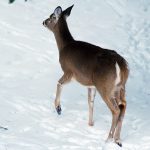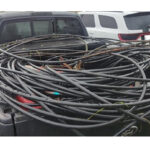Home »

Watercolour with weeds
After months of collecting, crushing, and boiling invasive plants, East Kootenay Invasive Species Council (EKISC) Outreach Coordinator Zoe Dancer led paint nights in two East Kootenay towns, where guests created paintings completely using plant-based paint.
Zoe made each colour of paint from a different invasive plant, such as Dame’s Rocket, Orange Hawkweed, and Oxeye Daisy.
By using different parts of the plants, she boiled them down to create several water-based pigments for attendees to use.
During the paint nights, the EKISC education team guided discussions about the negative effects of all these plants, encouraging guests to learn more about the impacts of invasive species.
In the process of making these paints, it turned out that many of these plants had a special property: their pigments were pH-reactive.
Similar to the way a piece of litmus paper changes colour depending on the pH it is exposed to, the paint from many of these plants would change if an acid (like lemon) or a base (like baking soda) were added. This added an extra level of fascination as people experimented with creating different colours.
Both paint nights had a great turnout, with tickets for both Fernie and Kimberley selling out very quickly.
Many incredibly talented and creative people came to showcase their painting skills, while the EKISC crew got the chance to reach a larger audience. We achieved our ultimate goal with this project: educating and raising awareness about invasive species in an interactive way.
We hope that these paint nights become a staple event for EKISC every summer, giving plenty of people the opportunity to experience painting with invasives. This project was made possible by the funding and support of the RDEK’s ReDi grant.
If you’re interested in making your own invasive plant-based paint, we have a tutorial on our YouTube channel.
The East Kootenay Invasive Species Council is a non-profit organization that builds partnerships and supports collaborative projects in natural and applied science, policy research, outreach and education to protect our forests, fields, gardens, waterways and cities from the damaging effects of invasive species. www.ekisc.com
Images submitted







